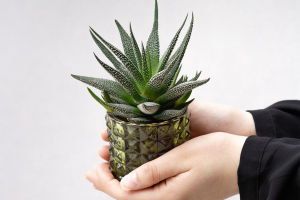We often see posts claiming that houseplants are natural air purifiers, capable of removing toxins, dust, and even germs. It sounds comforting and eco-friendly, but the truth is a little different.
Understanding what plants can—and cannot—do will help us make smarter choices for our homes. Today, let’s break down three common myths about air purification and explore how we can use plants effectively.
Myth 1: Plants Can Fully Purify Indoor Air
One of the most widespread beliefs is that simply placing a few plants in a room will completely clean the air. In reality, plants do absorb some harmful substances and dust, but their effect is minimal.
For example, spider plants, ivy, and monstera can absorb trace amounts of formaldehyde and other volatile organic compounds (VOCs). However, studies show that to remove enough pollutants to make a noticeable difference in a standard room, we would need dozens or even hundreds of plants. That’s clearly impractical for most homes.
Air purifiers with HEPA filters or proper ventilation systems work far faster and cover a larger area than any number of houseplants could. So while greenery may slightly help, it cannot replace professional equipment for serious indoor pollution.
Myth 2: All Plants Are Equal in Cleaning Air
Another common misconception is that any plant will provide the same benefits. In truth, different plants have different abilities: some trap dust effectively, while others absorb small amounts of toxins.
Large-leafed plants, like rubber plants and monstera, are excellent at capturing dust due to their wide surface area. CAM plants, such as aloe and cacti, absorb CO₂ at night, making them ideal for bedrooms. Meanwhile, spider plants and ivy may slightly absorb VOCs in recently renovated rooms.
Placement matters just as much as the plant type. To be effective, plants should be positioned near areas where dust or pollutants enter, such as windows, doorways, or corners with less airflow. Random placement won’t deliver meaningful air purification, so we must plan carefully.
Myth 3: Plants Can Remove Odors and Fight Bacteria
A big misunderstanding is that plants can handle odors or reduce germs. In reality, they have almost no effect on cooking smells, bathroom odors, or indoor pollutants. They also do not eliminate bacteria or viruses in the air.
If we want to reduce odors or airborne microbes, ventilation, activated charcoal filters, or air purifiers with HEPA or UV functions are the real solutions. Plants are simply supportive—they cannot replace these primary methods.
How to Use Plants Wisely for Better Air
Even if plants aren’t magic air cleaners, they can still provide modest air benefits while enhancing our living space. Here’s how:
- Choose the right plant: For dust, pick wide-leafed or textured plants like rubber plants and monstera. For mild VOC absorption, spider plants and ivy are suitable. For bedrooms, consider night-friendly CAM plants like aloe or cacti.
- Maintain plants properly: Dust can block leaf pores, so wipe leaves weekly. Avoid overwatering, which can lead to mold growth in soil. Keep toxic plants out of reach from children or pets.
- Combine with real solutions: Always use ventilation or air purifiers as the main method for improving air quality. Plants should be an auxiliary element—supportive and decorative, not a replacement.
- Mind room size and quantity: A couple of well-placed plants are enough for most rooms. Overcrowding doesn’t increase purification significantly and can sometimes create maintenance problems.
Why Plants Still Matter
Even with their limitations, plants are valuable companions in our homes. They improve mood, add beauty, and provide a subtle sense of connection with nature. The psychological benefits alone make them worthwhile.
In addition, the tiny air improvements they offer—like capturing dust and slightly balancing oxygen and CO₂—can complement other air-cleaning measures. The key is to appreciate their real benefits without expecting them to solve serious air pollution problems.
Enjoy Green Wisely
Lykkers, it’s fun to imagine our plants as little air-cleaning heroes. But knowing the truth about these myths helps us keep expectations realistic. Plants can make our homes more inviting, slightly improve air quality, and boost our mood—but they cannot replace proper ventilation or air purifiers.
By choosing the right plants, placing them thoughtfully, and pairing them with actual air-cleaning solutions, we can enjoy their beauty and gentle benefits safely. Let’s treat greenery as a helpful companion, bringing freshness and comfort to our daily lives while staying practical.


